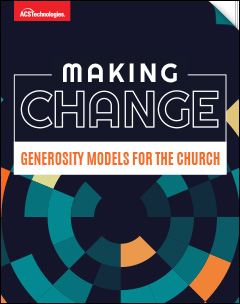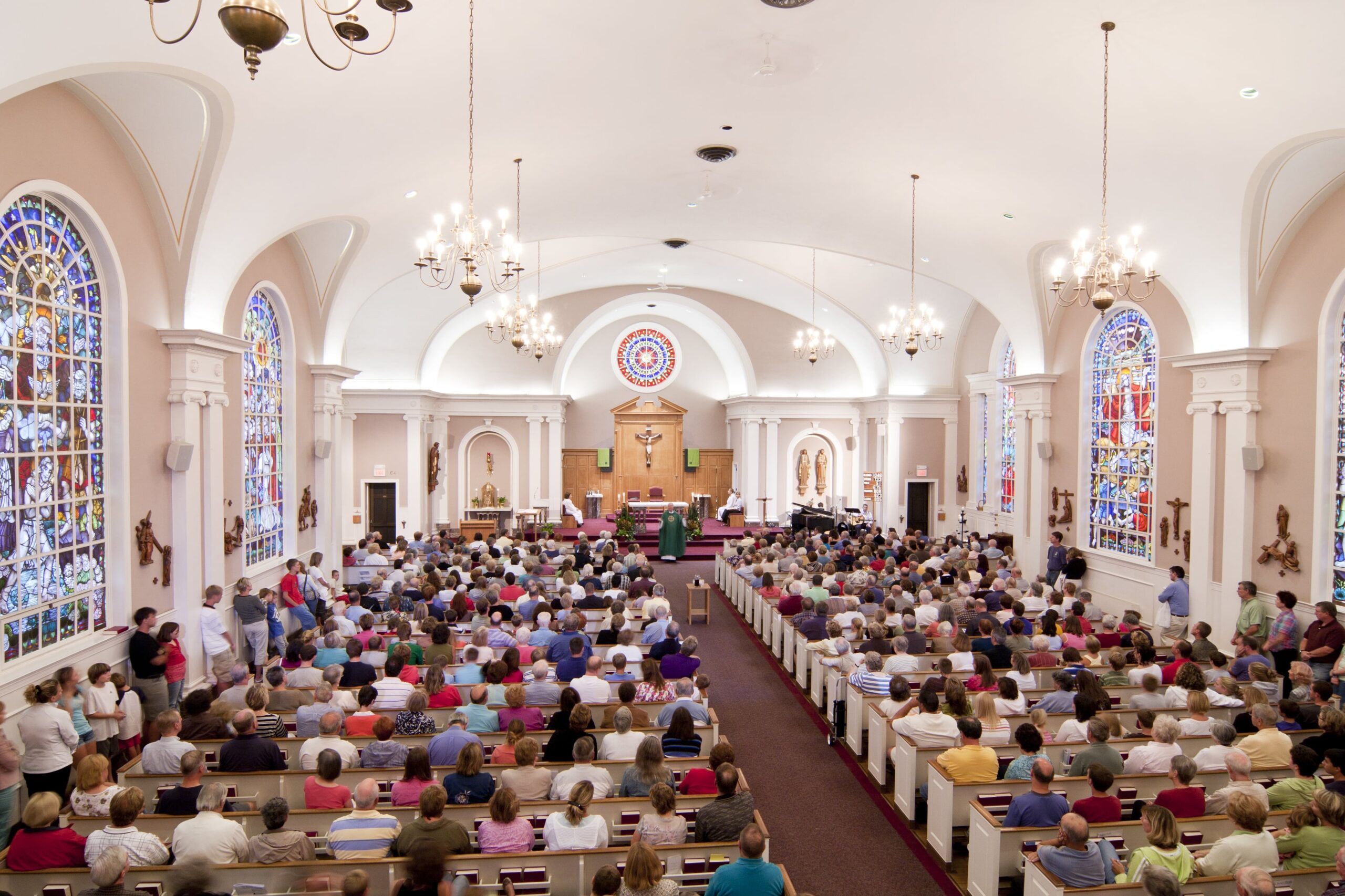In this blog series, we’re looking at Biblical generosity models to re-energize and inspire new strategies for stewardship. In the first two posts, we paused to look at our own hearts, our own leadership styles and how to calibrate if we’re stuck or lack the bandwidth to make change. As we embark on making change, we can draw on timeless stories of our faith. These stories are able to give new life to how we cultivate generous givers in our congregations.
We’ve unpacked two generosity models in the previous posts. Today’s is a reminder that our members – at every capacity level – need and want to make a contribution that matters. It’s our job as pastors and ministry leaders to help them do that.
Biblical Generosity Model #3: GENEROUS PEOPLE GIVE OUT OF THEIR SUBSTANCE, WHETHER LARGE OR SMALL
In the story we find in Luke 21:1– 4, Jesus compares the widow’s mite to the rich man’s gifts. This demonstrates that the gifts of all are needed and used in God’s economy. This is a well known story, and your congregants have probably heard or read it many times. Yet it holds a special meaning for me. In my world of working in philanthropy and managing many giving campaigns for organizations and ministries, the most powerful moments are when I hear stories of sacrifice, whether big or small, in people’s giving.
I’ve seen young children give of their allowance. I’ve seen people of means reach for the largest gift they’ve ever given to take a stand for a great cause. And I’ve seen those who regularly need the support of the food pantry heed its call for volunteers and work to sort and distribute food to others. In each and every case, it’s the sacrifice that counts.
Sacrificial Giving
Among many givers these days, there isn’t actually much sacrifice involved in their giving. In spite of the volume of their contributions, their giving is small relative to their total capacity. When you come across that person who sets something else aside in order to help accomplish a key task or vision— that is a special gift!
Several years ago, I had the opportunity to travel to some of the most impoverished areas of East Africa. I was taken to many villages to speak. And I visited with the leaders in those communities. I’ll never forget the moment I saw firsthand the generosity of people giving out of their own substance…in this case, they gave despite dire poverty.
After I had spent a full day in one village, the people gathered to send me off on my journey. They brought chickens, vegetables, fruit— even a goat. This was a poor village, where people had little to spare. Yet they gave of their own poverty to thank me— someone from far away, who merely gave them a day in his life. It took me years to fully grasp that moment of generous and sacrificial giving.
Offering Opportunities for Giving
So how do we tap into Jesus’ message to shape our church’s vision for giving? In many ways, we’re challenged to find a place for each of our members – children and youth included – at the donor table. Whether giving of time or resources, we must be intentional about offering opportunities for sacrificial giving at many levels.
We also need to recognize sacrificial giving when we are inclined NOT to notice it. That is an additional layer of beauty in the story of the widow’s gift. As churches, we must strive to do a better job honoring those who give out of their substance.
This can take many forms. Pastors, encourage your team to creatively consider how to add even one type of acknowledgment for these gifts. Is there a way to thank those who have given to the church consistently for a certain number of years? And celebrate those milestones? Recognition that honors not the amount of the donations but the loyalty of the giver. In the same vein, we can thank those who have given a certain number of volunteer hours or over consistent years. For instance,10 years of mostly thankless parking lot duty or five years of Sunday School teaching. This not only demonstrates gratitude but also showcases sacrificial giving (in its broadest sense) in your congregation.
Above all, focusing on involvement and giving as indicators of how people show love and support the church will help you identify the widow’s mites in your own offering plate.
We’ll close this series in the next post by looking at how we can continually inspire our donors – and ourselves as ministry leaders.
Does your church’s donor engagement plan need a revamp?
These easy-to-implement strategies get their inspiration from the models of generosity we find in scripture. Inspire your staff and your church’s donors by taking a look at best practices in leadership alongside some of the Bible’s most poignant lessons about giving as you freshen your stewardship plans.
DOWNLOAD YOUR FREE GUIDE TODAY!
Tim Smith has over 30 years of experience in Church, Non-Profit Administration, Management, and Fund Development. He serves as an Executive Pastor and Chief Development Officer in growing Churches and Non-Profit Organizations. This has provided a wide range of expertise and resources. Tim serves as Founder and CEO for Non-Profit DNA. This a boutique firm committed to helping nonprofits and churches build their capacity through fundraising, leadership, team building, staff recruiting, and coaching.





